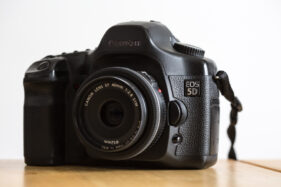It Isn’t All About The Gear – only a little bit
It’s fair to say, I was never your typical “gear head” photographer. Back in the days of film I learned to respect whatever kit I had and got the most out of it, even if it wasn’t top-of-the-range.
My first professional kit consisted of a Nikon FE2 and a Kiron 28-70mm f/2.8 lens, which I bought secondhand and even that needed a repair before I could use it. I don’t think Kiron exist any more. Nikon? well I think they’re still around, but I use Canon…
To me, my cameras and lenses have always been just kit for the job. I don’t rush out and buy the latest equipment whenever a new camera comes out. There always has to be a good reason to do so, especially since the digital camera market “came of age” and digital SLR cameras got to a stage where there wasn’t really a bad one to be had, just different levels of ruggedness or fancier features at different price points.
Ok, I do get a little excited when I buy a new camera body, but mainly it has to prove itself to me and earn my trust and respect over the course of several assignments.
I’d say the Canon 5D MKIII body which I’ve had for well over a year has done that. I had the MKII before it and never liked it. It had too many short-comings for me to warm to it. I usually felt I was getting the shots in spite of the camera, not because of it. Perversely, the 10-year-old 5D original body is a classic and I still own one. I use it in spite of its age because in some circumstances it’s really helpful to use two cameras at once, and it’s always essential to have a backup camera should the main one fail.
In fact I used the MKI body alongside the MKIII on a job last week and it performed exactly as I required. And when I delivered the images, the client didn’t say, “We hate these, they were taken on a 10-year-old camera!” In fact they loved the pictures and will get lots of use from them.
The fact is, a camera built in the days of yore can, in certain circumstances, work better than some of the really high-resolution camera bodies available today. I think the MKIII has more than double the resolution of the MKI, and sometimes this can cause problems. It all comes down to knowing how a particular camera will perform with a particular lens under specific circumstances; something I’m not sure all photographers take note of.
For my assignment this afternoon I’ll probably stick to the MKIII because I know it’ll give me the best results for the circumstances I’m working in. Horses for courses, cameras for… um… well, you get the picture.


It is often about the gear. Although many of the familiar ‘names’ say they have no views about the gear they use, I feel that they are just avoiding the question. I shoot professionally for a British concern that’s environmentally concerned. Many are amazed at what I use: I have four Nikon F bodies, two black, two chrome, non-working Photomic metering finders. I use hand-held meters, Weston Master V. The reason I use these, along with contemporary lenses 20/24/28/35/50/85/105/135mm is that I know I can rely on this old stuff absolutely. No batteries to run out, no electronic to fail, no need to charge the battery up overnight. I can sling my ancient Billingham bag in the boot and set off. So you see, it is about the gear.
Hi Toby, thank you for dropping by and thank you for your thoughts. Indeed, the gear always has some bearing. It has to be a balance between obsessing about having the latest kit and being more concerned with the photography, the story and the quality of results and actually so many more considerations.
I envy you that you can use old Nikon film bodies and I’ve been toying with the notion of getting back into using film, though it would probably have to be limited to personal project use. Not a bad distinction to have though; digital for client work, film for personal projects. It may yet happen, so watch this space!
Have a super 2016!